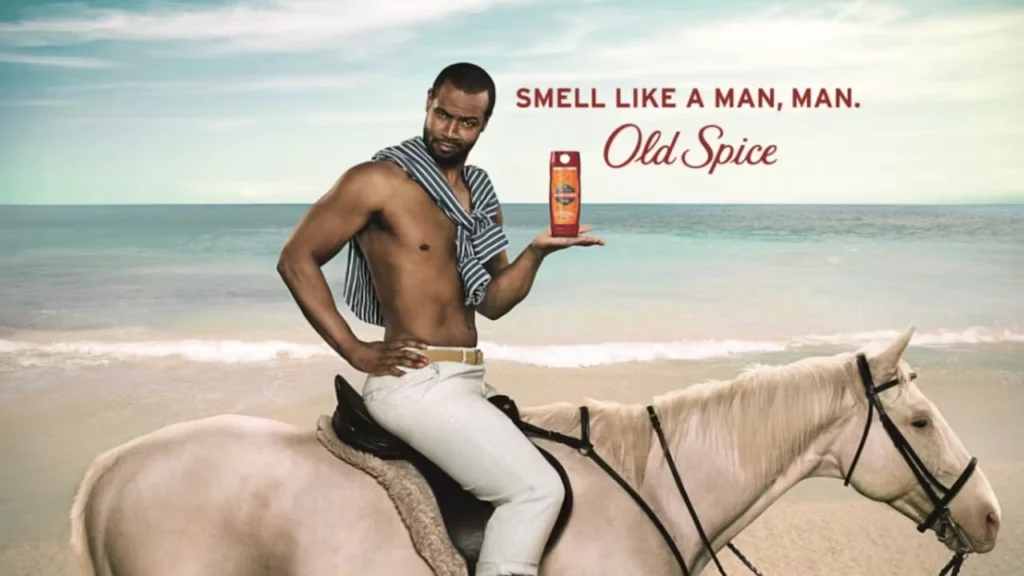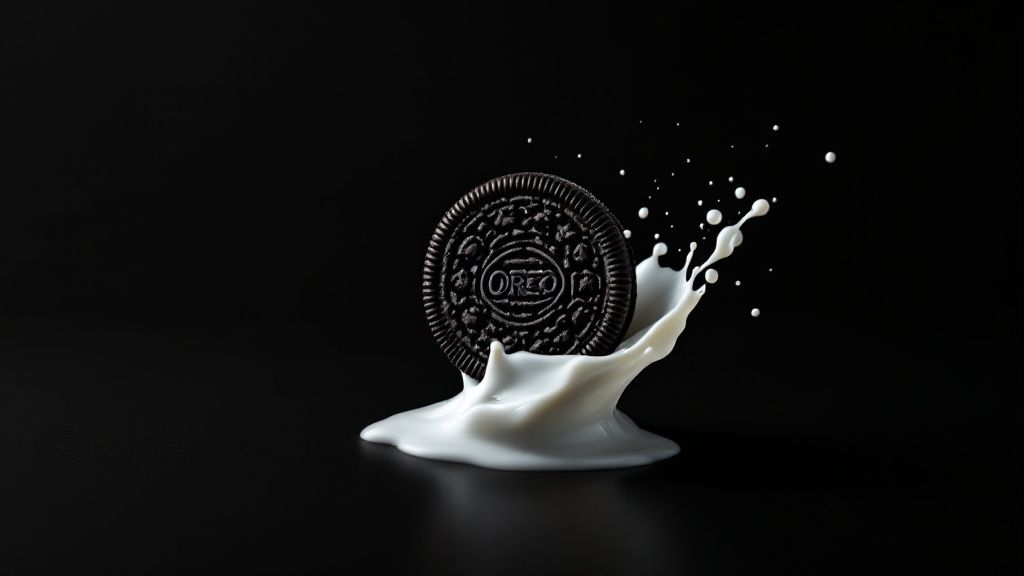Catching Lightning in a Bottle: The Magic of Viral Marketing
Consumers in the busy online environment of today are continuously bombarded with marketing communications. The final aim is to really connect with your audience by transcending this noise. With its possibility for quick, broad reach, viral marketing presents a strong road towards this. From creative challenges to unforgettable social media campaigns, viral marketing has transformed brand interactions with their consumers. It shows that often even the biggest advertising budgets cannot match real connections and shareable materials. But viral success is more than just chance; it’s a skillfully mixed concoction of ideas, tactics, and a little bit of the unexpected.
The core concept of viral marketing, while seemingly a recent trend, actually stems from the long-standing principle of word-of-mouth advertising. The digital age, with its social media platforms and instant global communication, has simply amplified this principle. Think back to the early days of the internet, with chain emails and Hotmail signature campaigns. These were early forms of viral marketing, hinting at the potential of organic sharing.
So, what makes a modern viral marketing campaign successful? It’s a potent mix of emotional resonance, compelling narratives, and an easily shareable format. Often, humor or a touch of controversy can also amplify the impact.
Key Ingredients of a Viral Campaign
- Emotional Resonance: Connecting with audiences on a deeper level.
- Compelling Storytelling: Creating narratives that resonate and stick with viewers.
- Shareable Format: Making content easy to spread across various platforms.
- Humor/Controversy: Adding elements that spark conversation and engagement.
Whether it’s aligning with a social cause, initiating discussions, or simply offering entertainment, successful viral campaigns ignite a spark that consumers readily share.
In exploring 10 distinct viral marketing campaigns, we’ll uncover the strategies behind their success. These examples will span diverse industries and approaches, from unexpected guerilla marketing tactics to heartwarming social experiments. By analyzing the mechanics behind these viral sensations – from a razor subscription service’s witty humor to a fast-food chain’s clever use of geofencing – you’ll gain practical insights for creating your own viral marketing strategies. Get ready to discover the secrets of capturing that elusive viral magic and learn how to use organic reach to propel your brand to new heights.
1. ALS Ice Bucket Challenge
The ALS Ice Bucket Challenge became a viral marketing phenomenon in 2014, showcasing the power of social media for charitable giving. The campaign cleverly combined a simple act with a strong emotional appeal to raise awareness and funds for amyotrophic lateral sclerosis (ALS) research. Participants filmed themselves dumping ice water over their heads, shared the videos online, and nominated others to do the same within 24 hours or donate to the ALS Association.

Several factors contributed to the campaign’s success: user-generated content, the challenge/nomination format, a clear call to action, the emotional tie to a worthy cause, and easy participation. These elements created the perfect viral storm. The campaign gained significant traction as celebrities, including Bill Gates, Mark Zuckerberg, Oprah Winfrey, and LeBron James, along with ALS patient and advocate Pete Frates, joined in and broadened its reach. The campaign resulted in an astounding 17 million videos on Facebook, accumulating 440 million views. You can find additional resources on content creation and marketing strategies at Our Sitemap.
The ALS Ice Bucket Challenge’s impact was undeniable. It raised over $115 million for ALS research and dramatically increased awareness of this previously lesser-known disease. The influx of funds led to significant scientific advancements, demonstrating the campaign’s tangible benefits.
Addressing the Criticisms and Highlighting Key Takeaways
Despite its success, the campaign also drew criticism. Some dismissed it as “slacktivism,” arguing that the ice water challenge was superficial and lacked sustained engagement with the cause. Concerns also arose regarding the environmental impact of water usage and the rapid decline in participation following the initial surge. Maintaining long-term engagement proved challenging.
However, the ALS Ice Bucket Challenge remains a valuable case study in viral marketing. Its success offers key takeaways for marketers:
- Create a simple, repeatable activity: Ease of participation was key to the campaign’s viral spread.
- Include a nomination mechanism: This fostered community and encouraged sharing.
- Attach to a meaningful cause: The emotional connection to ALS research propelled the campaign.
- Make participation accessible to anyone: Regardless of background, everyone could get involved.
- Ensure clear branding and message: The focus on ALS and the donation link were clear.
The ALS Ice Bucket Challenge secured its place in viral marketing history by demonstrating social media’s ability to mobilize millions for a charitable cause. While its long-term impact remains under evaluation, the campaign’s innovative approach and unprecedented reach offer valuable lessons for marketers aiming to create impactful campaigns.
2. Old Spice ‘The Man Your Man Could Smell Like’
The Old Spice “The Man Your Man Could Smell Like” campaign is a prime example of viral marketing done right. Launched in 2010 by Wieden+Kennedy for Procter & Gamble, the campaign blended humor, targeted messaging, and real-time engagement to revitalize the Old Spice brand. It proved that even established products can find viral success with a smart strategy.

The campaign initially gained traction with a memorable commercial featuring former NFL player Isaiah Mustafa. The ad’s quick wit, direct address to female viewers, and outlandish scenarios resonated with audiences. But what truly launched the campaign into viral stardom was the innovative follow-up.
Old Spice created personalized video responses to comments and questions on social media platforms. These videos featured Mustafa in character as “The Man Your Man Could Smell Like.” This real-time interaction was unprecedented, sparking online conversations and encouraging sharing.
Key Features of the Campaign’s Success
The campaign’s success can be attributed to several key features:
- Humor-based content
- Direct audience address
- High production quality
- Real-time social media response
- Character-driven campaign
By targeting women, who often purchase men’s grooming products, Old Spice strategically broadened its target audience.
Measuring the Impact
The campaign’s impact was significant. Old Spice sales increased by 107% in the month following the launch. The campaign also earned 40 million YouTube views within a week and won the Grand Prix at the Cannes Lions International Festival of Creativity. The campaign didn’t just sell body wash; it redefined the brand’s image. In a remarkable feat, Old Spice created 186 personalized video responses in just 48 hours, resulting in a 3000% increase in YouTube channel subscribers.
Challenges and Considerations
While the campaign was a resounding success, it also presented challenges. The initial commercial’s high production costs and the dedicated team needed for real-time engagement represented significant investments. Maintaining that level of interaction over time proved difficult. The initial success also set a high bar for future campaigns.
Actionable Tips for Similar Strategies
Interested in implementing a similar strategy? Consider these tips:
- Create Memorable Characters: A strong character, like “The Man Your Man Could Smell Like,” can become closely associated with your brand.
- Use Appropriate Humor: Humor can be powerful, but ensure it aligns with your brand’s identity.
- Plan Ongoing Social Media Engagement: Real-time interaction amplifies reach and strengthens connections with your audience.
- Consider Influencers: Think about who influences purchasing decisions and tailor your message accordingly.
- Be Prepared to Scale: Viral campaigns can grow rapidly, so be ready to manage increased demand and engagement.
You might be interested in: Our Sitemap for other helpful resources.
3. Dove ‘Real Beauty Sketches’

The Dove ‘Real Beauty Sketches’ campaign, launched in 2013, became a viral marketing sensation. It explored the difference between how women see themselves and how others perceive them. This powerful message resonated with audiences globally, showcasing the impact of emotional storytelling in marketing.
The campaign’s core concept was simple: an FBI-trained forensic artist, Gil Zamora, sketched women based on their own descriptions. Then, Zamora sketched the same women based on descriptions from strangers. The differences were striking. The self-portraits were often critical, while the stranger’s sketches were more flattering.
Features and Benefits
The campaign’s success stemmed from several key elements:
- Emotional Storytelling: The campaign tapped into a relatable insecurity, forging a connection with the audience.
- Social Experiment Format: The unique format intrigued viewers, prompting organic sharing and discussion.
- Documentary-Style Production: The authentic, unpolished feel added to the campaign’s credibility.
- Authentic Human Experiences: The campaign focused on a universal experience, making it relatable to a wide audience.
- Brand Values Integration: Dove subtly reinforced its focus on “real beauty” without overt product placement.
Pros and Cons: A Balanced Perspective
Like any campaign, ‘Real Beauty Sketches’ had both strengths and weaknesses.
Pros:
- Viral Success: The campaign garnered 4.6 billion global media impressions and over 50 million YouTube views. It quickly spread to over 110 countries.
- Brand Impact: The campaign solidified Dove’s position on beauty standards, building an emotional connection with its target audience.
- Earned Media Value: The campaign generated an estimated $150 million in earned media.
Cons:
- Diversity Concerns: The campaign received criticism for its limited portrayal of diverse ethnicities and body types.
- Exploitation Critique: Some argued that the campaign capitalized on women’s insecurities.
- High Production Costs: Reproducing this type of campaign demands significant investment.
- Difficult to Replicate: Creating a follow-up with similar impact proved challenging.
Tips for Implementation
The ‘Real Beauty Sketches’ campaign offers valuable lessons for marketers:
- Focus on Universal Human Truths: Connect with your audience through shared experiences.
- Prioritize Emotional Resonance: Focus on emotional connection over product features.
- Address Social Issues: Aligning with social causes can amplify your message.
- Plan for Cultural Translation: Ensure your message resonates across different cultures.
- Balance Authenticity with Brand Messaging: Maintain a genuine feel while integrating your brand values.
The Dove ‘Real Beauty Sketches’ campaign demonstrated the power of emotional marketing. By focusing on human experiences and a relevant social issue, Dove created a viral phenomenon that significantly impacted its brand. While facing some criticism, the campaign provides valuable insights for marketers striving to create authentic and impactful content.
4. Blendtec ‘Will It Blend?’

The “Will It Blend?” campaign by Blendtec is a perfect example of simple yet effective marketing. Launched in 2006, the series features founder Tom Dickson testing the limits of Blendtec blenders. Dressed in a lab coat and safety glasses, Dickson pulverizes a bizarre array of items. From iPhones and golf balls to marbles and even Justin Bieber CDs, the blender takes on all challengers.
This unusual premise tapped into a natural curiosity. Viewers couldn’t help but wonder, “What would happen if you blended that?” Blendtec transformed this curiosity into a highly successful marketing strategy.
The campaign’s strength lies in its straightforward approach. Each episode follows the same format: introduce the item, blend it, and show the results. This predictability, combined with Dickson’s energetic presentation, created a recognizable and engaging format. A simple product demonstration became a captivating form of entertainment. The extreme tests, blending items far beyond normal kitchen use, highlighted the blender’s power and durability.
Viral Success and Longevity
“Will It Blend?” became a viral sensation organically. The initial iPhone blending video racked up over 12 million views, launching the series into internet stardom. With over 189 episodes and more than 300 million YouTube views, the campaign’s popularity has endured for over 15 years. The results speak for themselves: Blendtec reported a 700% increase in sales.
Pros and Cons of the Campaign
Here’s a breakdown of the campaign’s advantages and disadvantages:
Pros:
- 700% Sales Increase: The campaign demonstrably impacted Blendtec’s bottom line.
- Low Production Costs: The simple format kept expenses low.
- 15+ Year Run: The concept maintained audience engagement for years.
- Showcased Product Benefits: The extreme tests effectively communicated the blender’s power.
- Built Anticipation: Viewers looked forward to seeing what would be blended next.
Cons:
- Environmental Concerns: Destroying electronics raised questions about responsible disposal.
- Potential for Negative Perception: Some viewers might see the destruction as wasteful.
- Demand for Continuous Content: Maintaining momentum required a steady flow of new ideas.
- Limited Emotional Connection: While entertaining, the campaign didn’t evoke strong emotions beyond amusement.
Implementing a Similar Campaign: Key Takeaways
Want to create your own viral marketing campaign? Consider these tips:
- Showcase Product Benefits in Unexpected Ways: Find creative demonstrations.
- Establish a Consistent Format: Repetition builds familiarity and encourages repeat viewership.
- Leverage Insider Knowledge: Authenticity and expertise build trust.
- Connect with Cultural Moments: Tie content to current events or trends.
- Prioritize Shareability: Engaging content trumps high production value.
The “Will It Blend?” campaign earns its place on this list due to its simple brilliance, impressive longevity, and undeniable impact. By blending product demonstration with entertainment, Blendtec created a viral marketing phenomenon that significantly boosted brand awareness and sales. It proves that sometimes the most effective marketing strategies are the most surprising.
5. Spotify ‘Wrapped’
Spotify ‘Wrapped’ is a marketing triumph, demonstrating how user data can fuel viral success. Launched in 2016, this yearly campaign gives users a personalized summary of their listening habits. Presented in a visually engaging and easily shareable format, it effectively transforms millions of users into brand advocates each December. This clever strategy boosts app downloads, drives subscriptions, and cements Spotify’s place as a dominant music streaming service.
Wrapped’s effectiveness lies in its personal touch. It provides more than just basic stats; it offers insights into individual music tastes, favorite artists, preferred genres, and even listening times. This personalized experience creates a strong emotional bond with the platform, making users feel understood. The visually appealing and easily digestible format, perfect for social media sharing, encourages users to share their musical identities, creating a widespread organic buzz.
Evolution and Innovation
The campaign’s evolution demonstrates a commitment to continuous improvement. Starting as a simple year-end review, Wrapped has grown to encompass:
- Interactive elements: Personalized playlists, fun quizzes, and engaging stories enhance user interaction.
- Podcast integration: Recognizing the rise of podcasts, Wrapped now incorporates listening data for this medium.
- Evolving visuals: Fresh visualization formats and vibrant color palettes keep the campaign visually exciting.
- Multilingual and regional versions: Tailored content caters to a global audience, maximizing reach and relevance.
Measurable Results
The impact of Wrapped is undeniable. In 2020, it generated an impressive 60 million shares. The campaign consistently boosts app downloads by 30% during its December run, leading to a surge in new subscriptions. This organic growth is powered by the FOMO (fear of missing out) created by the campaign’s limited availability, building anticipation throughout the year. Crucially, Wrapped utilizes existing user data, minimizing campaign costs while maximizing impact.
Pros and Cons of Spotify Wrapped
| Pros | Cons |
|---|---|
| Massive social sharing (e.g., 60 million in 2020) | Limited window of relevance (primarily December) |
| Drives app downloads and new subscriptions | Potential privacy concerns regarding data usage |
| Creates annual anticipation and excitement | Requires a robust and sophisticated data infrastructure |
| Reinforces personal connection with the platform | Yearly pressure to innovate and refresh the format |
| Leverages existing user data (cost-effective) |
Implementing a Similar Strategy: Key Tips
- Leverage existing user data: Find insightful ways to present user data that resonates with your target audience.
- Design with social sharing in mind: Ensure content is visually appealing and easy to share across platforms.
- Create FOMO: A limited-time element encourages immediate engagement.
- Set expectations for recurring campaigns: Build anticipation for future iterations.
- Balance personalization with shareability: Content should be both personal and relatable to a broad audience.
Spotify Wrapped is a prime example of a well-executed data-driven campaign that achieves massive organic reach and drives significant business results. By focusing on personalization, shareability, and constant innovation, Spotify has created a viral marketing phenomenon. While replicating its success requires investment in data infrastructure and creative execution, the potential benefits make it a worthwhile strategy for businesses seeking to deepen user engagement and fuel organic growth.
6. Oreo ‘Dunk in the Dark’
The Oreo “Dunk in the Dark” campaign is a prime example of real-time marketing and its potential to create significant brand awareness with a small investment. During Super Bowl XLVII in 2013, a power outage at the New Orleans Superdome caused a 34-minute delay. While other brands scrambled, Oreo’s social media team saw an opportunity.
They quickly created a tweet with an image of an Oreo against a dark background and the caption, “You can still dunk in the dark.” This witty and relevant message instantly connected with millions of people talking about the Super Bowl online.
This simple tweet went viral, getting over 15,000 retweets and millions of impressions almost immediately. It showed the effectiveness of agile marketing teams, fast decision-making, and pre-approved processes. The “Dunk in the Dark” campaign’s success wasn’t just luck; it was preparedness. The team’s ability to create, approve, and publish the tweet within minutes of the blackout highlights their readiness and efficient workflow. This case study is now a common example in marketing, showcasing real-time marketing and setting a new standard for brand agility. You can explore more strategies in Our Miscellaneous Sitemap.
Key Features and Benefits
- Real-Time Responsiveness: Reacting to a live, unexpected event.
- Cultural Relevance: Connecting with the shared Super Bowl experience.
- Simple Production: An image and text tweet.
- Quick Decisions: Responding within minutes.
- Witty Wordplay: “Dunk in the Dark” aligned perfectly with Oreo.
Pros and Cons
| Pros | Cons |
|---|---|
| Significant organic reach (15,000+ retweets) | Required 24/7 team availability and monitoring |
| Low production cost | Difficult to replicate due to reliance on unpredictable events |
| Generated significant buzz | Required pre-approved processes for quick execution |
| Showcased brand agility and responsiveness | Depended on external factors outside the brand’s control |
| Extended campaign life |
Impact and Examples
- Content created and approved within minutes.
- Earned significant media coverage.
- Became a marketing case study.
- Set a new standard for real-time marketing.
Implementing a Similar Strategy: Tips and Recommendations
- Establish quick approval processes for social media.
- Have a dedicated team ready during major events.
- Keep messaging simple, concise, and on-brand.
- Prioritize cultural relevance and timeliness over high production value.
- Be prepared to scale your response if a post gains traction.
Campaign Origins
- Brand: Oreo
- Agency: 360i
- Parent Company: Mondelēz International
The “Dunk in the Dark” campaign earned its place on this list because it perfectly demonstrates the potential of real-time marketing. It reminds us that sometimes, the most effective marketing is simple, agile, and relevant to the current moment.
7. Dollar Shave Club “Our Blades Are F***ing Great”
This viral marketing campaign perfectly captures the power of authenticity, humor, and a strong value proposition. Dollar Shave Club’s 2012 launch video, titled “Our Blades Are F***ing Great,” became a sensation overnight. It launched the then-unknown brand into the public eye and disrupted the razor industry. The 90-second YouTube video features founder Michael Dubin giving a funny, direct-to-camera explanation of the company’s subscription service.
The video’s low-budget, single-take style, combined with Dubin’s irreverent delivery and memorable lines, resonated with audiences who were tired of paying too much for razors.
This campaign’s success comes down to several key features:
- Founder as Spokesperson: Dubin’s genuine enthusiasm and comedic timing made him relatable and trustworthy.
- Irreverent Humor: The video’s bold, unconventional humor stood out and grabbed attention.
- Clear Value Proposition: The benefits – affordable, high-quality razors delivered to your door – were clear and effective.
- One-Take Style Video: The raw, unpolished feel added to the video’s authenticity.
- Direct-to-Camera Address: This approach created a personal connection with viewers.
The results were impressive:
- 12,000 orders within 48 hours of launch.
- $4,500 production cost.
- 3.2 million subscribers.
- $1 billion acquisition by Unilever in 2016.
These numbers show just how effective the campaign was. It generated immediate sales, built a loyal customer base, and disrupted an entire industry. Dollar Shave Club’s success sparked change in the consumer goods sector, inspiring many other brands to adopt the subscription model.
Considering the Drawbacks
Of course, this approach isn’t a perfect fit for everyone:
- Humor Not Appropriate for All Brands/Industries: The irreverent tone might not suit every audience.
- Setting High Expectations: Maintaining this level of virality can be difficult.
- Cultural Context: Humor is subjective and can be misinterpreted.
- Limited Engagement Beyond the Initial Video: Sustained engagement requires ongoing content.
Implementing a Similar Strategy: Tips
- Prioritize authenticity over high production value.
- Communicate your value proposition clearly.
- Use humor that aligns with your brand and audience.
- Challenge industry norms.
- Create concise and memorable content.
Dollar Shave Club’s campaign deserves recognition for its powerful viral marketing strategy. It proved that even small budgets can yield big returns with creativity, authenticity, and understanding your audience. You might be interested in: Our guide on sitemaps for improving your website’s visibility.
This campaign, driven by Michael Dubin, Mark Levine, and the Dollar Shave Club team, offers valuable lessons for marketers and entrepreneurs. It shows how thinking outside the box and embracing a unique brand voice can deliver extraordinary results.
8. IKEA ‘Bookbook’
The IKEA ‘Bookbook’ campaign is a classic example of how a brand can use humor, parody, and cultural relevance to breathe new life into a seemingly outdated product. In 2014, facing the increasing dominance of digital media, IKEA Singapore didn’t abandon its printed catalog. Instead, they cleverly repositioned it as a cutting-edge piece of technology – the ‘bookbook’.
This campaign took the form of a professionally produced video mimicking Apple product launches. The video highlighted the catalog’s features with dry humor, emphasizing “eternal battery life,” “instantaneous page loading,” and its lightweight, portable design. This witty parody, contrasting the digital world with the simplicity of a physical catalog, resonated with audiences globally.
The success of the ‘Bookbook’ campaign stemmed from several factors. The familiar format of an Apple product launch, the timing coinciding with actual Apple events, the humorous contrasts, the clever “bookbook” wordplay, and the high production value all contributed to its viral spread.
The campaign’s effectiveness is clear from its results. The video gained over 12 million views and was shared more than 200,000 times within the first 24 hours, generating significant media coverage from major news outlets around the world. Beyond online buzz, the campaign boosted catalog distribution and inspired similar campaigns for later IKEA catalogs, demonstrating its lasting influence. This success came from the campaign’s ability to create a positive brand association by celebrating the traditional catalog in the digital age, using a readily available, low-cost item – the existing IKEA catalog. The concept translated easily across different markets, further amplifying its reach and impact.
Challenges and Lessons Learned
Despite its success, the ‘Bookbook’ campaign also presented some challenges. Its release, timed to coincide with Apple product launches, required careful planning and execution. The parody format, while effective, had a limited lifespan and couldn’t be repeated endlessly without risking audience fatigue. The higher production costs compared to a typical catalog advertisement also presented a hurdle, though the return on investment justified the expense.
Tips for Implementing Similar Strategies:
- Find humor in your industry’s context: Identify conventions and clichés within your industry and look for funny ways to subvert them.
- Leverage timing with cultural moments: Connect your campaign to relevant current events or trends for greater visibility and engagement.
- Use parody of familiar formats: Employ recognizable formats from popular culture, like product launches or movie trailers, to create a sense of familiarity and humor.
- Focus on unexpected contrasts: Emphasize the contrast between traditional and modern, digital and physical, or expectation and reality to create a memorable narrative.
- Maintain brand voice while borrowing from others: Ensure the parody aligns with your brand’s existing voice and personality.
The IKEA ‘Bookbook’ campaign earned its place on this list because it skillfully demonstrates the power of humor, parody, and clever timing to revitalize a traditional marketing tool in the digital world. The campaign offered a model for businesses looking for fresh and cost-effective ways to connect with their audience and create viral buzz. It showed how even something as ordinary as a catalog can become a viral sensation with the right creative approach. While no specific website link is dedicated to the ‘Bookbook’ campaign, searching “IKEA Bookbook” will provide numerous articles and videos highlighting its success. This campaign was driven by IKEA Singapore, with creative agency BBH Asia Pacific and creative director Tinus Strydom leading the charge.
9. Burger King ‘Whopper Detour’
The Burger King ‘Whopper Detour’ campaign is a perfect example of how a brand can use technology and clever marketing to surpass competitors and generate massive buzz. Launched in 2018, the campaign cleverly used geofencing technology to offer customers a Whopper for just one penny, but only if they were within 600 feet of a McDonald’s restaurant. This bold move encouraged customers to digitally “detour” from the competition and download the Burger King app, driving both app engagement and sales.
How It Worked
The campaign centered around the Burger King mobile app. When a user was near a McDonald’s, the app would unlock the 1-cent Whopper offer. After ordering, the app directed the customer to the nearest Burger King to pick up their discounted burger. This gamified approach turned a simple fast-food purchase into a fun, interactive experience.
Real-World Impact
The ‘Whopper Detour’ campaign delivered impressive results:
- Massive App Downloads: The Burger King app saw 1.5 million downloads in only nine days, rocketing from 686th place to the number one spot in the App Store.
- Earned Media Frenzy: The campaign earned approximately $15 million in media coverage, with major news outlets reporting on the innovative promotion. This organic reach boosted the campaign’s overall impact.
- Sales Surge: In-app sales jumped 300% during the promotion, generating over $6 million in revenue from the 1-cent Whopper deal alone. In-store traffic also witnessed a 40% increase.
- Industry Recognition: The campaign’s creativity won the Grand Prix at the Cannes Lions International Festival of Creativity.
Features and Benefits
The ‘Whopper Detour’ effectively combined several key elements:
- Geolocation Technology: Allowed precise targeting of competitor locations.
- Competitor Targeting: Directly engaged with McDonald’s in a bold, but legal, manner.
- Mobile App Integration: Increased app downloads and user engagement.
- Clear Promotional Offer: The 1-cent Whopper was an irresistible offer.
- Gamification: Turned a regular purchase into a fun, interactive experience.
Pros and Cons
Pros:
- Highly effective at increasing app downloads and sales.
- Generated substantial earned media attention.
- Innovative use of technology.
- Direct competitor engagement without legal complications.
Cons:
- Demanded complex app development and backend infrastructure.
- Effectiveness was limited to the short promotional window.
- Potential for technical issues, which did impact some users.
- Increased operational burdens on Burger King restaurants.
Tips for Implementation
- Think Outside the Box with Technology: Explore new ways to use existing technologies.
- Create a Compelling Story: Don’t be afraid to engage with competitors (ethically, of course).
- Put the Customer First: Make the customer journey a central part of your campaign.
- Ensure a Solid Foundation: Your systems should be able to handle the increased traffic and demand.
- Prioritize a Positive User Experience: Balance a clever concept with a smooth and enjoyable customer experience.
Why It Deserves Its Place on the List
The ‘Whopper Detour’ perfectly demonstrates the potential of blending creative ideas with technology. The campaign’s boldness, combined with its effective execution, created a viral marketing sensation that achieved remarkable results. This case study provides valuable insights for marketers on how to use technology, engage with competitors, and create truly memorable experiences. The campaign was publicized by Burger King, conceived by the advertising agency FCB New York, and spearheaded by Fernando Machado, Burger King’s Global CMO at the time.
10. Deadpool Marketing Campaign
The 2016 Deadpool marketing campaign stands as a masterclass in character-driven marketing. Instead of following the typical superhero movie formula, the campaign embraced the character’s irreverent, fourth-wall-breaking personality. This generated significant buzz and ultimately, box office success, resonating with existing comic book fans while also attracting a wider audience unfamiliar with Deadpool.
Understanding the Strategy
The core of the Deadpool campaign was authenticity. The marketing team recognized the character’s unique voice and humor and mirrored it across every channel. This strategy involved understanding the target audience and leveraging Deadpool’s inherent “anti-hero” appeal to cut through the noise of the crowded superhero market.
Evolution and Popularity
Superhero movies were, and still are, everywhere. Deadpool‘s marketing needed to stand out. The campaign achieved this by subverting expectations. Instead of focusing solely on action and special effects, the marketing highlighted Deadpool’s wit and self-awareness. This unconventional approach, combined with Ryan Reynolds’ genuine enthusiasm and understanding of the character, quickly gained online traction. This generated massive organic sharing and built significant anticipation for the film’s release.
Real-World Examples
- Emoji Billboards: A billboard using emojis to spell out “Deadpool” demonstrated a savvy understanding of internet culture and the character’s playful nature.
- Romantic Comedy Posters: Positioning the R-rated action movie as a Valentine’s Day romantic comedy brilliantly subverted genre expectations, generating curiosity and intrigue.
- Testicular Cancer Awareness Video: This initiative showcased Deadpool’s irreverence while addressing a serious topic, further humanizing the character and expanding the campaign’s reach.
- Tinder Profile: A Tinder profile for Deadpool was a unique way to reach younger demographics and reinforce the character’s unconventional personality.
- Custom Emoji Keyboard: This gave fans a fun and interactive way to engage with the character and spread the word online.
Features and Benefits
- Character-Driven Strategy: The campaign’s success hinged on letting the character’s personality drive the marketing efforts.
- Multiple Formats and Channels: From traditional billboards to social media engagement and custom emojis, the campaign effectively used a diverse range of platforms.
- Actor Involvement: Ryan Reynolds’ dedication to the character and active participation in the marketing added authenticity and fueled fan engagement.
Pros and Cons
| Feature | Pro | Con |
|---|---|---|
| Box Office | The film grossed $782 million on a $58 million budget. | R-rated content limited some marketing channels and demographics. |
| Audience Reach | Expanded viewership beyond the typical comic book fan base. | Traditional marketing avenues were sometimes less receptive to the unconventional approach. |
| Marketing | The unique content generated massive organic sharing. |
Tips for Implementation
- Authentic Character Voice: Let your product or brand’s personality shine through.
- Embrace Uniqueness: Don’t be afraid to stand out from the competition.
- Unconventional Channels: Explore innovative marketing avenues beyond traditional methods.
- Appropriate Humor: Tailor your humor to your target audience.
- Key Talent Involvement: Engage key stakeholders in your marketing strategy for increased authenticity.
Why Deadpool Deserves its Place on the List
The Deadpool marketing campaign showcases the power of authenticity and character-driven marketing. By embracing the character’s unique personality and using unconventional methods, the campaign generated substantial buzz, expanded its audience, and achieved remarkable box office success. It remains a valuable case study for marketers looking to break through the clutter and connect with their audience in a meaningful way.
Popularized By: Ryan Reynolds, 20th Century Fox, Tim Miller (director), Marvel Entertainment
10 Viral Campaigns: Key Comparison
| Campaign | Implementation (🔄) | Resources (⚡) | Outcomes (📊) | Advantages (⭐) | Tips (💡) |
|---|---|---|---|---|---|
| ALS Ice Bucket Challenge | Simple, viral, and easy participation | Minimal cost; relies on user-generated content | Global awareness & significant fundraising | High virality with emotional appeal | Use a nomination system & clear call-to-action |
| Old Spice “The Man Your Man Could Smell Like” | Moderate complexity with responsive, real-time follow-ups | High production quality with a dedicated social media team | Rapid sales surge and high online engagement | Memorable humor and character-driven identity | Incorporate humor and direct audience engagement |
| Dove “Real Beauty Sketches” | Well-planned, documentary-style execution | High production investment; strategic storytelling | Massive global reach & impressive media impressions | Emotional resonance with strong brand positioning | Focus on authenticity and universal human truths |
| Blendtec “Will It Blend?” | Consistent product demos and repeatable format | Low-cost, founder-led demonstration videos | Direct product benefits leading to significant sales growth | Clear showcase of product power and shareability | Highlight unexpected benefits through creative demos |
| Spotify “Wrapped” | Complex data integration with personalized rollout | Advanced technology and data analytics investments | Annual surge in social sharing and boosted subscriptions | Personalized engagement leveraging existing user data | Leverage user data to create shareable visuals |
| Oreo “Dunk in the Dark” | Agile, real-time execution during unpredictable events | Minimal production; relies on rapid approval processes | Instant social media buzz and widespread earned media | Quick, culturally relevant response | Be ready for rapid, agile reactions during live events |
| Dollar Shave Club “Our Blades Are F***ing Great” | Simple production with authentic, founder-led narrative | Minimal cost with high-impact, personality-driven video | Immediate market disruption and viral audience engagement | Clear value proposition and distinctive brand voice | Prioritize authenticity and humor |
| IKEA “Bookbook” | Timely, well-planned parody linked to cultural moments | High production quality using creative parody concepts | High viewership and positive brand association | Clever parody that contrasts digital and traditional formats | Leverage cultural timing and humor |
| Burger King “Whopper Detour” | Complex geolocation-based campaign with app integration | High tech infrastructure and coordinated operational effort | Massive app downloads and notable revenue boost | Innovative competitor targeting through gamification | Ensure robust technology and a smooth user journey |
| Deadpool Marketing Campaign | Creative multi-channel, character-driven strategy | High involvement from key talent and cross-channel integration | Record-breaking box office results and strong organic sharing | Bold, unconventional approach aligning with character persona | Embrace a unique voice and consistent brand messaging |
Igniting Your Own Viral Spark: Key Takeaways
These viral marketing campaign examples, from the ALS Ice Bucket Challenge to the Deadpool marketing blitz, highlight important principles for viral success. Authenticity is key. It resonates with audiences, as seen in Dove’s “Real Beauty Sketches.”
Creative and unexpected approaches, like Blendtec’s “Will It Blend?” and IKEA’s “Bookbook,” capture attention and spark curiosity. Knowing your audience is crucial. Campaigns like Spotify “Wrapped” and the Dollar Shave Club’s irreverent humor demonstrate how tailoring your message can maximize impact.
Timing matters too. Oreo’s “Dunk in the Dark” expertly demonstrated how timing and relevance can propel a campaign to viral fame. Finally, a strong call to action, like Burger King’s “Whopper Detour,” drives tangible results.
Putting Principles Into Practice
Applying these concepts takes planning and execution. Start by identifying your target audience. Understand their values, interests, and online behavior. Brainstorm creative ideas that align with your brand and resonate with your audience.
Don’t be afraid to experiment with different formats and platforms. Remember, virality is unpredictable. Be prepared to adapt based on real-time feedback.
Staying Ahead of the Curve
The viral marketing landscape is constantly changing. Emerging trends like short-form video content, influencer collaborations, and interactive experiences offer new opportunities to engage audiences and create viral moments. Staying informed and experimenting with new approaches is essential.
Key Takeaways:
- Authenticity: Be genuine and connect with your audience emotionally.
- Creativity: Think outside the box and develop unique, attention-grabbing campaigns.
- Audience Understanding: Tailor your message to resonate with your target audience’s values and interests.
- Timing & Relevance: Capitalize on current events and cultural trends.
- Adaptability: Be ready to adjust your strategy based on real-time feedback and performance.
Ready to ignite your own viral spark and harness the power of social proof to elevate your brand? Explore the latest insights and proven strategies on social proof and online marketing at Notifyio.net. Discover how to build brand credibility, drive customer engagement, and achieve sustainable business growth with expert advice and effective techniques.




Leave a Reply